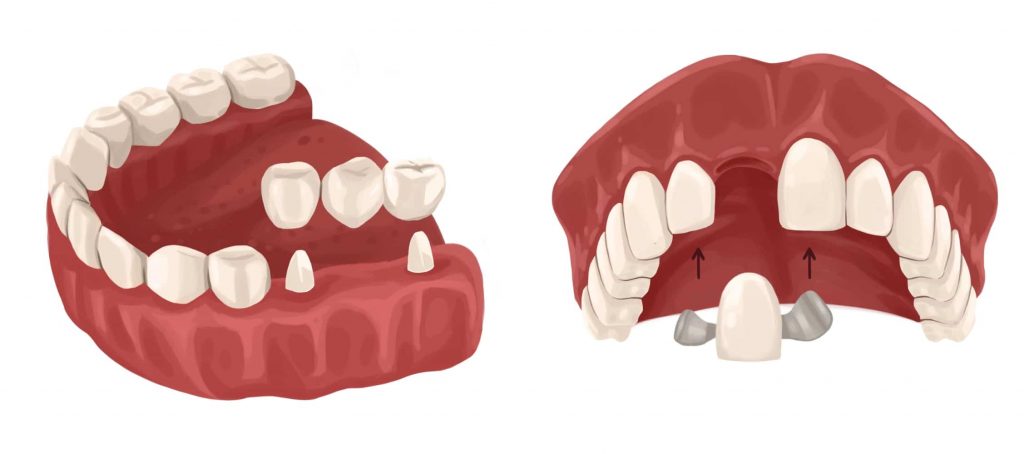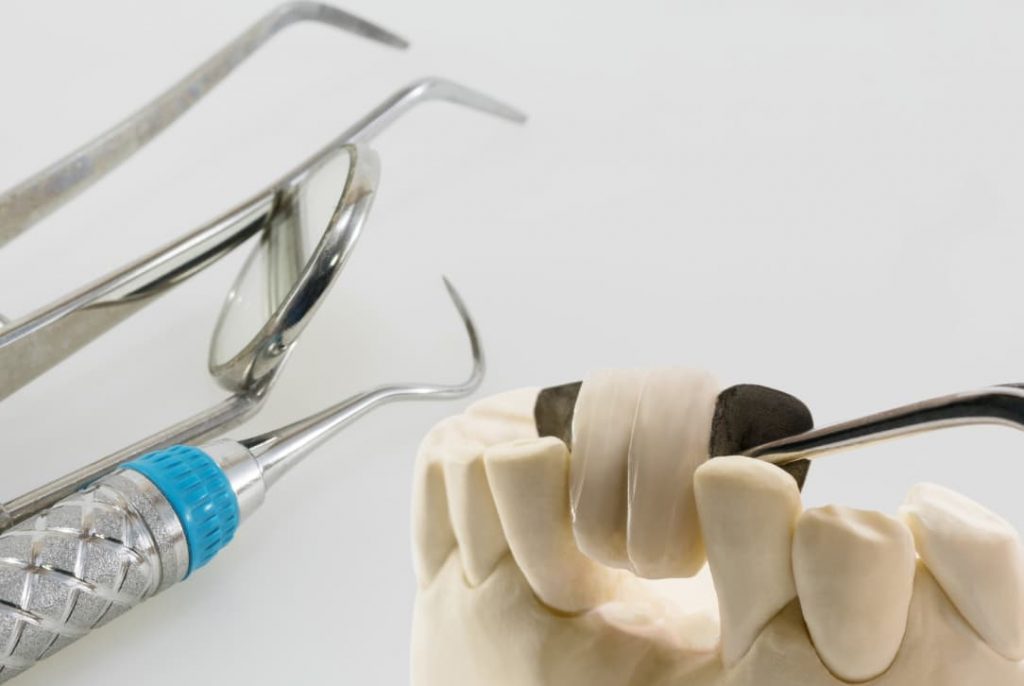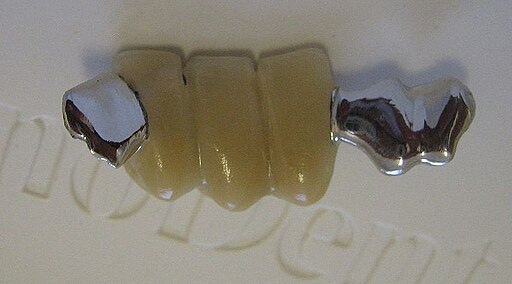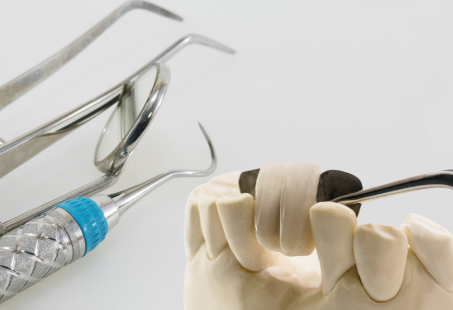A Maryland dental bridge is a fixed restoration to replace missing teeth, especially in the front of the mouth. It’s a type of dental bridge, however, unlike its traditional counterpart, it doesn’t involve extensive tooth preparation (shaving). For this and other reasons, it may be preferred by some over other treatment options like conventional dental bridges and implants.
However, because of the way these implants are designed, they also pose certain limitations in not just their positioning but also their durability. If you’re considering this treatment option, there are some things you should know about it. In this guide, we’ll go over its procedure, maintenance, durability, and cost.
What Is A Maryland Dental Bridge?
A Maryland dental bridge is a restoration that is supported by wings attached to neighbouring teeth. It may require minimal tooth preparation. This is one of the pros of this treatment in that it helps keep a healthy tooth intact because of its more conservative approach.
A Maryland bridge also goes by other names, such as a resin-retained or resin-bonded bridge; the wings of the bridge are bonded with dental resin cement. It’s also known as an adhesive dental bridge.

It should be noted that the wings supporting the false (pontic) tooth can be both metallic and non-metallic. With metal, the downside is that the neighbouring teeth might appear a shade grey.
However, as noted in a study published in Inside Dentistry, there are non-metallic options that use ceramics, “such as lithium disilicate or zirconia.” And zirconia, in particular, has given “some of the best results” owing to its “high strength and toughness.”
Keep in mind that you need to have your natural teeth to support this kind of dental bridge on both sides. And it’s not usually considered suitable for the teeth at the back because it’s not strong enough for that area.
What Is The Procedure For Maryland Dental Bridge?
After you arrive at the clinic for your Maryland dental bridges, the procedure might be as follows:
- The dentist shaves a small portion of the adjacent teeth to make room for wings (if needed).
- An impression of your teeth is taken to be sent to a dental lab.
You will then have to wait for some time till your bridge is ready. Afterwards, you’ll have a second appointment:
- The dentist will place the bridge in the gap to check the overall fit and the bite.
- If it needs modifications, you may be scheduled for another appointment, but if that’s not the case, the back of your teeth will be etched.
- The Maryland bridge will be bonded in place using resin cement.
Your dentist may give you a temporary restoration until the bridge is permanently fitted.
Can You Eat With Maryland Bridge?
While you can eat with a Maryland bridge, with dental bridges, in general, patients may be advised against:
- Hard and sticky (e.g. caramel, sweets, ice, nuts)
- Consuming too many sugary and acidic foods (they can affect the teeth supporting your false tooth)
- Biting on hard objects (e.g. using your teeth as a tooth to open bottles)
Therefore, you need to be careful about eating foods that can damage, break or reduce the longevity of your bridge. Other than your dietary habits, it’s also important that you maintain good oral hygiene through brushing your teeth and flossing.
Why Does Maryland Bridge Keep Falling Out?
A Maryland dental bridge can fall off if the cement isn’t holding it well enough in its place. According to the Leeds Teaching Hospitals NHS Trust, the failure of the cement to hold the Maryland bridge is the most common complication associated with it. However, they also note that this is something that can be “easily rectified,” and the bridge can be stuck back.

Other than that, however, generally, the stability of dental bridges can also be affected by other factors, such as problems with the supporting teeth (e.g. tooth decay) or issues with the bridge itself. In any case, if you’re experiencing this issue, you must visit your dentist.
How Long Does A Maryland Bridge Last?
A Maryland dental bridge might not last as long as a traditional dental bridge. As per Leeds Teaching Hospitals NHS Trust, where 80% of conventional bridges can last for 10 or more years, it’s 5 or more for the Maryland bridge.
Another study in the American Journal of Orthodontics and Dentofacial Orthopedics noted that one third of Maryland bridges “debond” just after a few years. Also, unfortunately, the rate of failure “increases with each attempt at rebonding.” Because of this, general dentists usually see this type of bridge as a “temporary solution” until a dental implant can be fitted.
It’s possible for Maryland bridges to last a long time, however, it can come down to multiple factors – one of which is how well you take care of them and maintain good oral hygiene.
How Much Does Maryland Bridge Cost?
In the UK, a single unit of Maryland bridge might cost you around £500. The total price can, of course, vary depending on the number of units you’re getting. However, other factors can influence the cost, such as:
- The material from which the bridge is made
- The location of the clinic
- The qualifications and experience of your provider
Is A Maryland Bridge Worth It?
A Maryland dental bridge can be worth it since it can improve the overall oral aesthetics and function with the slightest (if any) shaving of the adjacent teeth. Additionally, this treatment might not require anaesthesia, which may potentially make the experience more easy for you.

An adhesive bridge might also be recommended to younger patients instead of an implant, as the jawbone may still be growing. It may also be a more cost-effective option in that it might cost less than a traditional bridge; the price of the latter may go as high as £1,500 or even more in the UK. However, keep in mind that it can have its drawbacks, such as issues with bonding and a higher rate of failure, among others.
Which Is Better: Maryland Or Traditional Bridge?
Each type of bridge has its pros and cons, and one might be better suited than the other depending on the unique circumstances of the patient. For instance, if the patient already has crowns or “large fillings” on the adjacent tooth or teeth, a traditional bridge is usually recommended, as per Leeds Teaching Hospitals NHS Trust.
With a traditional bridge, the survival rate can also be higher, and it might better stay in its place. However, a Maryland bridge, for example, might work better in those instances where the patient is looking for a more conservative and affordable treatment option.
Make sure you consult a board-certified medical professional for a proper assessment of your situation. They’ll recommend you a suitable treatment plan accordingly.
Conclusion
A Maryland dental bridge is a rather unique kind of restoration, and it certainly has many advantages, such as no shaving of the teeth next to the gap. However, there might be issues with the durability of this type of restoration, so you may be recommended alternatives like a traditional dental bridge or implants.
In any case, make sure to do your research to find an experienced and qualified dentist who understands your needs and concerns and suggests a treatment plan that can give you the best possible result.
Reviewed and approved by Dr Izbel Aksit
FAQ
What’s the difference between a Maryland and a regular dental bridge?
In a Maryland dental bridge, the false tooth is supported by metal or ceramic wings cemented on the backside of adjacent teeth, while in a regular bridge, there are dental crowns instead of wings on the sides that go over the neighbouring (abutment) teeth.
How many teeth can be replaced with a Maryland bridge?
A Maryland bridge might have one, two or even three teeth in it. However, only your dentist can determine if it will actually be suitable for you.
